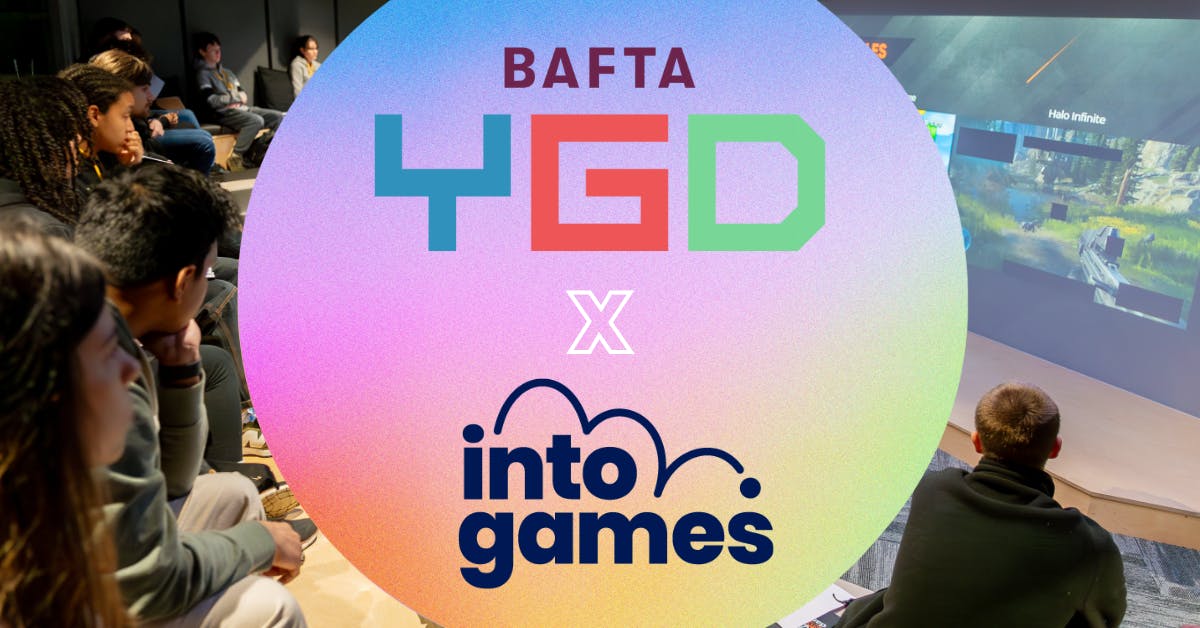
14 December 2020
How to Play Rocket League Like a Pro

Into Games Young Journalist in partnership withCritics' Clubteamed up professional games journalists with aspiring writers from underrepresented genders between 14 and 18. Over the course of a day, participants took part in workshops on reviews, features, various techniques and finding their unique critical voice. Their final pieces are published on the Into Games and Critics' Club websites.
If you have played Rocket League you may have begun to wonder, “How do the pros make it look so easy?" You might watch their games thinking, “I can’t begin to play like them, my mechanics are nowhere near good enough.” I am here to tell you, while your mechanics might be holding you back, there are simple team play ideas you can bring into your game: rotations!
First what do we mean when we say “rotations?” Rotations is the strategy all teams use to spread out around the pitch, pick up boost, and maintain momentum. A common way to model this system is called 1-2-3 rotations. This model gives each player a number which represents their job on the pitch.
Offence
In this position we are the blue team.
- The first player is challenging the other team.
- The second player is ready to help player 1 by positioning for a pass.
- The third player is ready in case the opponents beat player 1 to the ball.
What might happen next?
- Player 1 loses the challenge on the ball and rotates back taking on the second player position while they rotate.
- Player 2 moves behind player 3, in to the third player position.
- Player 3 pushes for the ball as they have the best angle for the challenge.
By doing this we form a circle on the field, this has a couple of benefits, two people will not go for the same ball and we will cover enough space to prevent the other team from breaking out of defence.

Defence
On defensive rotation your job should be, challenging the ball as often as possible, rotating far post and, making it as hard as possible for the other team. The screen shot to the right is a typical set up for defence.
- The first player’s job is to challenge the ball and prevent the other team from scoring.
- The second is positioned behind the first on the back post of the goal.
- The third player is rotating back and can: go on the backboard, pick up boost, or attempt to bump the other team’s player 2.
In the second screen shot we can see the next step of this rotation.
- Player 1 has taken a challenge on the ball, and has rotated to the third player position, as the second player has a better chance to hit the ball.
- Player 2 has moved to first player position to get another challenge on the ball.
- Player 3 has moved to the back post to cover in case player 2 struggles to get a good touch on the ball.
Ideally you can keep this circle up for as long as you stay on defence as long as, your team manages to collect enough boost and you keep challenging the opponents to stop them making passes.

The transition from defence to offence
Finally, I will explain how to transition from defence to offence. This is the skill in rotations that will help your team the most. If you and your team can master this part of rotations, you will spend less time on defence, which will create more goal scoring opportunities for your team, therefor winning more games. So, how do we go about getting from defence to offence.
- Player 1 has lost the challenge to the orange team and had spare boost so has pushed up for a pass.
- Player 2 has pushed to the front of the net to be able to hit the ball.
- Third player is slowly moving to the back-post positions saving their boost.
In the second screen shot we can see that player 2 has been able to pass the ball to player 1.
- Player 1 has received the ball and gone back to the first player position trying to make a play on the ball.
- Seeing the passing opportunity, player 3 has turned up the field into the second player position so that player 1 can pass to them.
- Player 2 is now in the third player position covering the net in case player 1 misses the ball.
There are many other ways to transition from defence to offence, but this is the most common. Regardless of what rank you are, I hope this will help you. Silver, Gold or Platinum, this system will help you play around teammates of all ranks preparing you for the higher ranks where this is expected knowledge.
By Frederica Teather
Stay up to date
It's time to level up your inbox
Pick which newsletters you're interested in receiving, and customise further by specifying a discipline.
Join our mailing listTell me more






